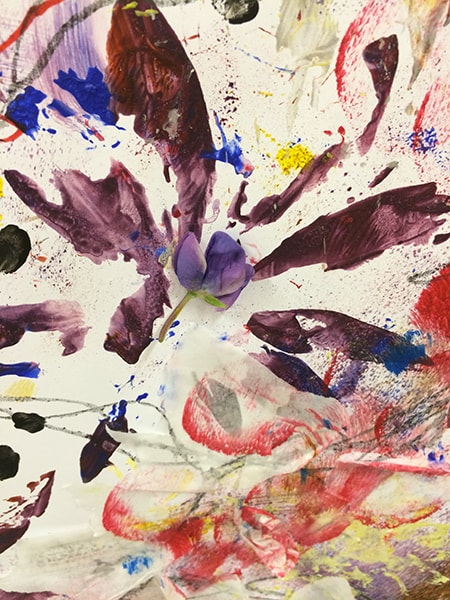
What is Expressive Arts Therapy?
Expressive Arts Therapy is a form of therapy that utilizes and embraces the energy of the arts in many of its forms which can be tapped into to open up communication between client and therapist whether it be with individuals or groups and can facilitate understanding and healing.
Let’s start with the core idea that this form of therapy is low skill/high sensitivity. Removing the stress of attempting to impress, the artwork produced can be more expressive than the work of highly trained artists. Stressing this model of creativity minimizes low esteem based in the feeling of lack of skill or talent and allows one to be fully engaged in the moment and with the tools at hand. This opens the door to sensitivity and a meditative state that fully accesses our senses.
We think, we smell, we touch and we access our memories in this form of activity. We stay sensitive to what is possible and to the space between us. The therapist uses artistic modalities to create a space where trust can develop and by working together with the client allows for deeper connection and feelings of expression. This creative connection is enhanced by the interplay between modalities that is the hallmark of expressive arts therapy.
The therapist with the client can shift modalities in search of an expression that resonates with the client. This heightens the experience of tapping into events that mark our lives and accesses the language of communication. The use of play, movement, visual arts, poetry to name a few are the methods by which clients, along side their therapist, can freely explore possibilities and different outcomes. With a willingness to go where one has not gone before or conversely go over and over something until something new arrives, until new shifts in experience or thinking can evolve. The capacity to shape our experience imaginatively in the way that an artist does is an essential part of being in our world of expressive arts therapy.
Artists regularly venture into what is unknown. It is the mystery of the process that leaves one open to surprises and that which can arise. Art constructs and de-constructs, shapes and reshapes. By bringing arts into the therapy realm, hidden aspects of the clients can be revealed as long as we are open to all possibilities with and open mind - a beginner’s mind. Curiosity is important in the observing role of the therapist. It is important that as we pay attention and notice what is happening with the client it helps us to connect and stay in that relationship. Staying present and connected to the client and allowing them to lead as we follow - to accompany them on their journey.
Through this process the therapist and client together form a relationship where new discoveries are found with an open mind. These new discoveries can lead to a novel ways of approaching obstacles in the client’s life as well as facilitating growth and healing. The therapist offers support and empathy to allow the client to feel heard and understood. The arts allow us as therapists and clients to take risks and journey into the unknown with the ability to imagine and shape what we encounter. Frustration and blame can lead to joy and possibility.
If you would like to learn more about how you can benefit from Expressive Arts Therapy, please request a consultation and we can have a chat.



